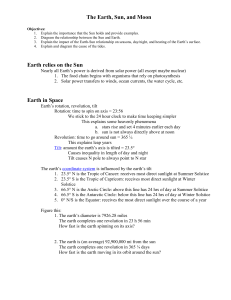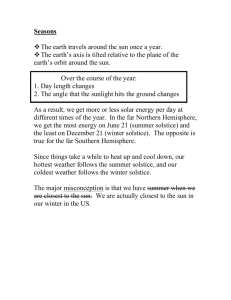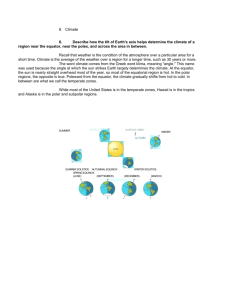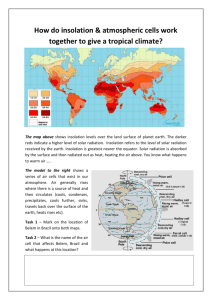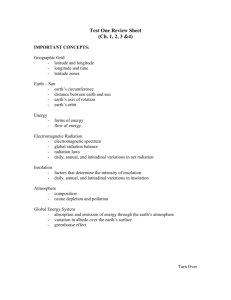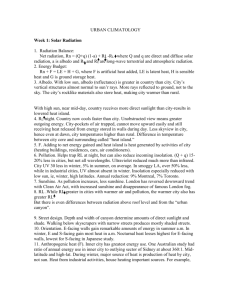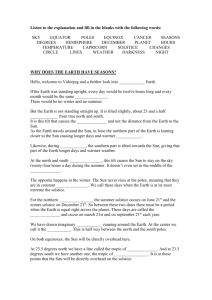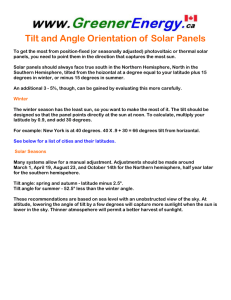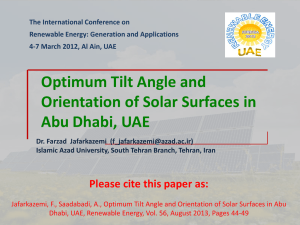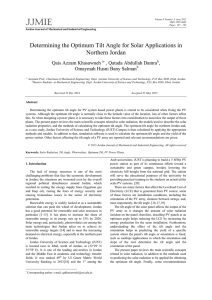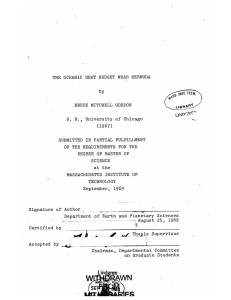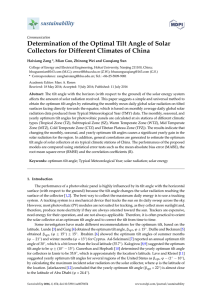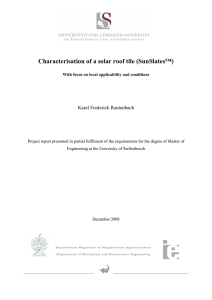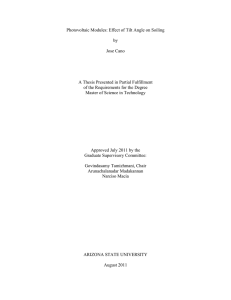Chapter 3, Part I Differences Summer & Winter
advertisement
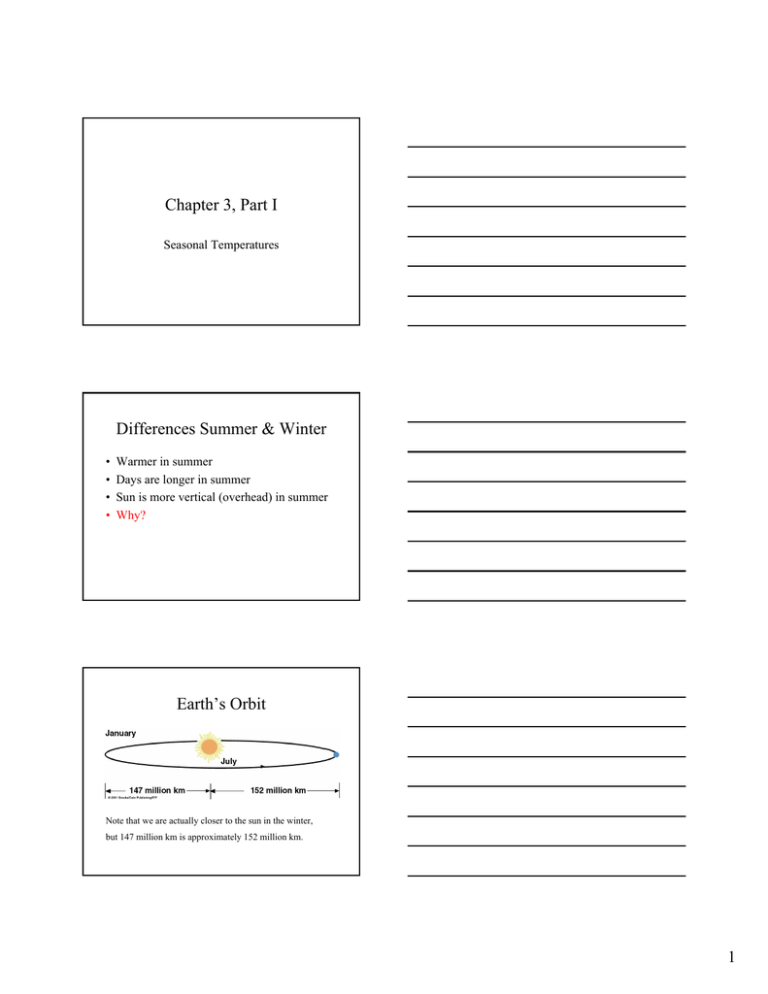
Chapter 3, Part I Seasonal Temperatures Differences Summer & Winter • • • • Warmer in summer Days are longer in summer Sun is more vertical (overhead) in summer Why? Earth’s Orbit Note that we are actually closer to the sun in the winter, but 147 million km is approximately 152 million km. 1 What causes seasons? • Amount of solar energy received at surface. • This is determined by – the angle of the sun in the sky – the length of a day. • Both of these are due to the 23.5o tilt of the earth as it goes around the sun. Orbit and Tilt North. Hemisphere Day Length Latitude 0 10 30 50 70 90 Vernal Summer Autumn Equinox Solstice Equinox Mar. 20 June 21 Sept. 22 12 hr 12 hr 12 hr 12 hr 12.6 hr 12 hr 12 hr 13.9 hr 12 hr 12 hr 16.3 hr 12 hr 12 hr 2 months 12 hr 12 hr 6 months 12 hr Winter Solstice Dec. 21 12 hr 11.4 hr 10.1 hr 7.7 hr 0 hr 0 hr 2 Insolation & Tilt – Part 1 • Insolation = incoming solar radiation. More vertical implies a brighter spot. Insolation and Tilt – Part 2 Radiation in the far northern lattitudes must pass through more atmosphere to reach the earth’s surface. Insolation at Winter Solstice • Because of both the day length and the angle of the sun in the sky, at winter solstice 3 Energy Balance Incoming Radiation Outgoing Radiation Local Seasonal Variations Summary • Seasonal variations are due to the 23.5o tilt of the earth. • The tilt leads to changes in both day length and the angle of the sun in the sky. • A more vertical sun in the sky has more incoming solar radiation. 4

